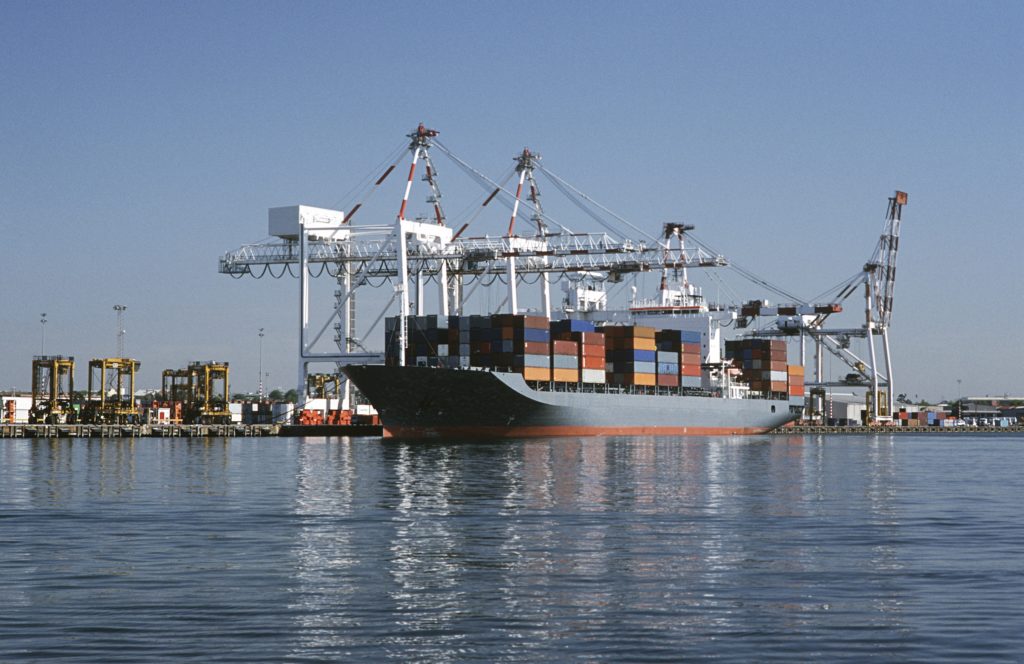
If you’ve ordered something online in the last few months or fulfilled an order as an eCommerce business owner, you must have come across shipping and delivery delays.
While eCommerce shipping delays were accepted as an immediate and temporary consequence of the global pandemic, no one expected the supply chain to stay broken one and half years later.
But that’s where we are – a global supply chain that’s fighting to come out of a logjam, and U.S consumers, worrying about late holiday product arrivals for the second year in a row.
This brings us to the pertinent question: why is eCommerce shipping still so slow in the U.S?
Let’s go over all the factors that are impacting eCommerce shipping delays and what you can do to avoid them.
Reasons why eCommerce shipping is slow:

Disruptions on the production floor
The first one is the biggest and most obvious – the pandemic. When COVID-19 struck the global economy early last year, it forced global businesses to shut down, including businesses in the manufacturing, supply chain, and raw material procurement industries.
The first blow came from China. For decades, U.S companies have outsourced product supply and manufacturing jobs to China and other Southeast Asian countries. According to a Statista report, almost half of Chinese manufacturing plants saw their supply chain disrupted due to the pandemic.
So when Chinese factories were quickly emptied in the wake of the pandemic, production came to a screeching halt. The effect was particularly visible in the semiconductor industry. Computer chips are essential to all kinds of B2C and B2B machines, like cars and computers, and the delay in production has pushed back other delivery timelines.
The ripple effect has been felt through all the industrialized countries including the United States. The disruptions on the production floor have been so big that we’re still winding around the path to recovery.
Unanticipated demand
At first, the pandemic led to pandemonium, which led to folks panic buying everyday essentials, creating shortages in other areas. People moved inwards and ended up saving a ton of money with regards to transportation, night outs, and other related activities. Combined with a renewed focus on home decor and personal health, the sudden accumulation of cash led to the eCommerce boom.
Consumers took up their digital devices and the “revenge buying” phenomena began. eCommerce orders jumped 32.4% in 2020 as compared to the previous year. With online orders pouring in, business owners found it hard to keep up. The demand was not expected at all, putting immediate pressure on an already fragile supply chain.
Consumers had grown accustomed to fast and same-day delivery popularized by Amazon and small eCommerce stores knew that if they had to stay in the business, they’d need to provide a similar experience, even in the face of a serious supply chain challenge.

Production location
In the last two decades, the supply chain cost for each product has grown tremendously. The low-cost alternative that China provided seems to have tapered off because of a resilient network and trade war.
According to a Gartner study, 33% of supply chain leaders moved their businesses away from China. Heavy tariff cost and geopolitical tensions are two prime reasons behind the move. In the past year, the tariff war increased logistics costs by 10% for 4 out of 10 companies. High tech, food and beverages, and industrial products are actively being moved out of China.
India and Vietnam have emerged as better options but the issue of distance still stays the same. That’s why a lot of businesses are planning to set bases closer to their customers. They are moving stateside and coupled with a renewed push for homegrown products and jobs for Americans, the shift has created a temporary setback for shipping infrastructures and production lines.
Employee shortage
COVID-19 pioneered what is now known as the “great resignation”. More people resigned from their jobs this year than in the last few years. The labor shortage across the board meant that there were fewer hands on the deck for logistics and delivery to go on smoothly.
Truck drivers have been under pressure for the last few months due to a huge influx of orders and the absence of efficient structures and bonuses. According to the American Trucking Associations, the U.S is short 80,000 truckers today. Shipping companies are also having a tough time getting new trucks, bolstered by the global computer chip shortage, derailing truck manufacturing putting the supply chain under further stress.
The labor shortage isn’t just visible behind the wheels. Thousands of factory workers, warehouse maintenance staff, and shipping professionals, like Amazon’s order fillers, have quit due to unfair working conditions and the labor shortage is making its presence felt on the shipping infrastructure.

Port delays
Ports play a pivotal role in the global supply chain and the lack of uniform infrastructure across different ports has opened up old wounds.
Thanks to the pandemic, demand has surged in one part of the world, while the other part has gone into lockdown. This trend has overwhelmed ports that were already struggling with labor shortages.
On top of that, bad weather conditions across the coastline of Asia have created a huge bottleneck. Frequent storms have forced cargo to sit idle in ports like Shanghai and Hong Kong, leading to further delays. The port issues in the global supply chain have created a domino effect, where a storm in Vietnam can end up slowing down deliveries of eCommerce products in America. While this is not a new phenomenon, it does further compound the issue.
Forecast
The chip shortage across southeast Asia has only prolonged the issue. Moody’s Analytics says that supply chain woes are likely to get worse before they get better. Some of the problems will resolve themselves, but it’ll take time. The central bank might slow down buying Government assets and increase interest rates to combat excessive demand and inflation.
Moving businesses back to America also seems to have the desired effect, as domestic products are seeing relatively better shipping times. According to Kevin Smith, CEO of Sustainable Supply Chain Consulting, “Nearshoring and restoring absolutely is going to happen.” With a strong local supply chain, businesses will be able to mitigate risks associated with a vulnerable global chain. Another way businesses can attract more people is by offering improved wages and bonuses.
Wider acceptance of 5G might also smoothen out the interruptions. With 5G-enabled devices and better usage of robotics, technology can offer better insights into managing day-to-day inventory and data to make better routing decisions for the future.

What you can do as an eCommerce business owner?
If you’re an eCommerce business owner struggling with long delays in procurement and delivery, you need to prepare for the holiday rush.
1. Plan ahead
Planning ahead is the best way to mitigate supply chain disruptions for the time being. This includes understanding your customer preferences, analyzing your bestsellers, checking competitors, and future-proofing inventory management.
It’s not an ideal situation when a customer places an order only to find it went out of stock yesterday. That’s why you need to update inventory status frequently and use efficient order processing software. Use automation, if possible, to take orders and maintain stock reports. This will save a lot of time for both you and the customer.
2. Offer free delivery
Free delivery has the biggest say in a consumer’s perception of a brand during the checkout stage. People expect free shipping each time they order a product online. While this can complicate the revenue margins for small businesses, it can be a good thing during shipping delays. People choose free delivery even if it means the delivery timelines will be stretched slightly. This takes the focus away from shipping shortcomings and helps customers save money.
3. Add features to offset the blow
Slow eCommerce shipping is not a pleasant experience, especially during the holidays. To soften the blow, try to be innovative. You can add a pre-order option instead of showing an “out of stock” banner. This is a nice psychological trick that turns weakness into a feature. Consumers would feel comfortable buying an item knowing they’ll get it once available, and you’d be relieved of the pressure of delivering it immediately.
Sharing coupons with your customers can also be a great idea. Instead of offering discounts immediately, you can offer coupons for the next purchase they make from you. All these features help take the focus away from delays in shipping.

4. Communicate with customers
Communicating has become a very important part of retaining customers during the pandemic. Customers remember the experience they’ve had with you and how you made them feel. By being honest and communicating up front, you can explain the shipping delays to them. This will reduce dissatisfied customers and cart abandonment rates.
You can send email newsletters to brief customers about the holiday season and shipping delays. Encourage them to order early to avoid the rush. Display clear banners on the website to explain why it may take additional days to deliver the products.
An informed consumer tends to be a happier one.
5. Work with a local eCommerce shipping partner
When you move your operations back into the States, you’ll need reliable, local shipping partners to deliver the products to customers. Local eCommerce partners have a focused and curated delivery infrastructure which expedites the delivery time. They know different routes, neighborhoods, and streets and can optimize delivery according to the customer’s needs.
Since local eCommerce delivery partners are all about efficiency, they’re able to offer more affordable rates to you. More often than not, they’re also immune to nationwide supply chain issues that disrupt the big players.

IntelliQuick Delivery: Your local eCommerce shipping partner
If you need your products delivered across Southwest America, IntelliQuick can help! We have headquarters and regional centers in Phoenix, Denver, Tucson, and Las Vegas. This gives us a competitive edge when it comes to facilitating fast and real-time delivery of local products. We have 100,000 square feet of warehouse space spread across the Southwest which shortens the time needed to offload and dispatch products.
IntelliQuick has a customized eCommerce delivery facility to address supply chain issues. Our gold standard eCommerce delivery program comes with flexible options for business owners:
- Same day delivery
- Afternoon delivery
- Next day delivery
We have the regional expertise in fulfilling large and small eCommerce orders in record time. If you need your products delivered in the Southwest and Western U.S. get in touch with us today.

